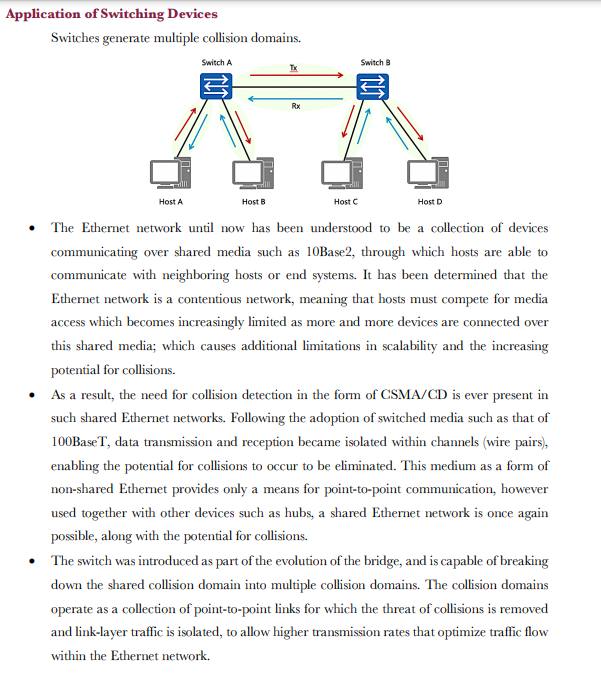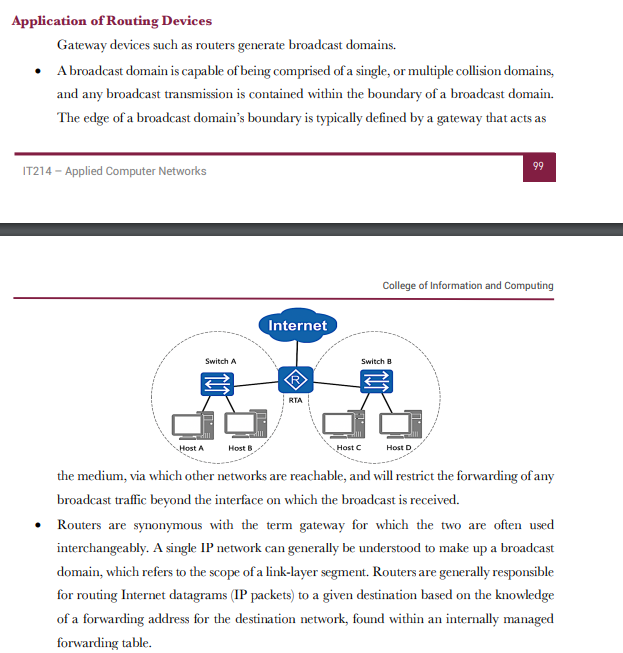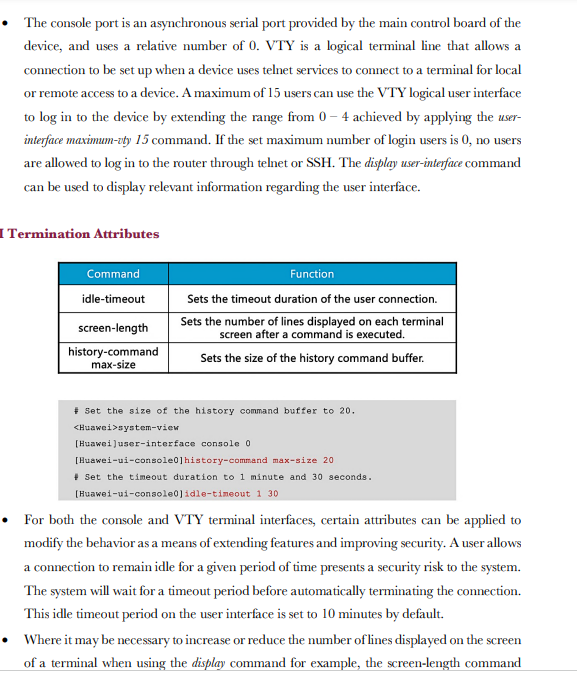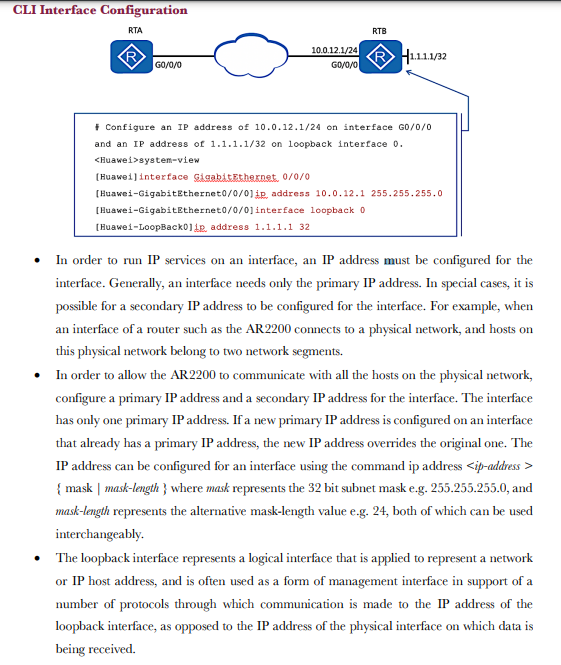Answered step by step
Verified Expert Solution
Question
1 Approved Answer
Application of Switching Devices Switches generate multiple collision domains. Switch A Host A Tx Rx Host C Switch B Host B The Ethernet network







Application of Switching Devices Switches generate multiple collision domains. Switch A Host A Tx Rx Host C Switch B Host B The Ethernet network until now has been understood to be a collection of devices communicating over shared media such as 10Base2, through which hosts are able to communicate with neighboring hosts or end systems. It has been determined that the Ethernet network is a contentious network, meaning that hosts must compete for media access which becomes increasingly limited as more and more devices are connected over this shared media; which causes additional limitations in scalability and the increasing potential for collisions. As a result, the need for collision detection in the form of CSMA/CD is ever present in such shared Ethernet networks. Following the adoption of switched media such as that of 100BaseT, data transmission and reception became isolated within channels (wire pairs), enabling the potential for collisions to occur to be eliminated. This medium as a form of non-shared Ethernet provides only a means for point-to-point communication, however used together with other devices such as hubs, a shared Ethernet network is once again possible, along with the potential for collisions. The switch was introduced as part of the evolution of the bridge, and is capable of breaking down the shared collision domain into multiple collision domains. The collision domains operate as a collection of point-to-point links for which the threat of collisions is removed and link-layer traffic is isolated, to allow higher transmission rates that optimize traffic flow within the Ethernet network. Host D Application of Routing Devices Gateway devices such as routers generate broadcast domains. A broadcast domain is capable of being comprised of a single, or multiple collision domains, and any broadcast transmission is contained within the boundary of a broadcast domain. The edge of a broadcast domain's boundary is typically defined by a gateway that acts as IT214 - Applied Computer Networks Host A Switch A Host B Internet RTA Host C College of Information and Computing Switch B 99 Host D the medium, via which other networks are reachable, and will restrict the forwarding of any broadcast traffic beyond the interface on which the broadcast is received. Routers are synonymous with the term gateway for which the two are often used interchangeably. A single IP network can generally be understood to make up a broadcast domain, which refers to the scope of a link-layer segment. Routers are generally responsible for routing Internet datagrams (IP packets) to a given destination based on the knowledge of a forwarding address for the destination network, found within an internally managed forwarding table. CLI User Interfaces The VTY number can be extended to a range of 0-14 for additional Telnet/SSH user connections. User Interface Console VTY system-view [Huawei]user-interface vty 0 4 [Huawei-ui-vty0-4] Relative Number IT214 - Applied Computer Networks 0 0-4 Each user interface is represented by a user interface view or command line view provided by the system. The command line view is used to configure and manage all the physical and logical interfaces in asynchronous mode. Users wishing to interface with a device will be required to specify certain parameters in order to allow a user interface to become accessible. Two common forms of user interface implemented are the console interface (CON) and the virtual teletype terminal (VTY) interface. 111 College of Information and Computing The console port is an asynchronous serial port provided by the main control board of the device, and uses a relative number of 0. VTY is a logical terminal line that allows a connection to be set up when a device uses telnet services to connect to a terminal for local or remote access to a device. A maximum of 15 users can use the VTY logical user interface The console port is an asynchronous serial port provided by the main control board of the device, and uses a relative number of 0. VTY is a logical terminal line that allows a connection to be set up when a device uses telnet services to connect to a terminal for local or remote access to a device. A maximum of 15 users can use the VTY logical user interface to log in to the device by extending the range from 0-4 achieved by applying the user- interface maximum-uty 15 command. If the set maximum number of login users is 0, no users are allowed to log in to the router through telnet or SSH. The display user-interface command can be used to display relevant information regarding the user interface. I Termination Attributes Command idle-timeout screen-length history-command max-size Function Sets the timeout duration of the user connection. Sets the number of lines displayed on each terminal screen after a command is executed. Sets the size of the history command buffer. # Set the size of the history command buffer to 20. system-view [Huawei) user-interface console 0. [Huawei-ui-console0]history-command max-size 20 Set the timeout duration to 1 minute and 30 seconds. [Huawei-ui-console0]idle-timeout 1 30 For both the console and VTY terminal interfaces, certain attributes can be applied to modify the behavior as a means of extending features and improving security. A user allows a connection to remain idle for a given period of time presents a security risk to the system. The system will wait for a timeout period before automatically terminating the connection. This idle timeout period on the user interface is set to 10 minutes by default. Where it may be necessary to increase or reduce the number of lines displayed on the screen of a terminal when using the display command for example, the screen-length command CLI Interface Configuration RTA GO/0/0 RTB 10.0.12.1/24 RH1.1.1.1/32 GO/0/0 Configure an IP address of 10.0.12.1/24 on interface G0/0/0 and an IP address of 1.1.1.1/32 on loopback interface 0. system-view [Huawei] interface GigabitEthernet, 0/0/0 [Huawei-Gigabit Ethernet0/0/0] ip address 10.0.12.1 255.255.255.0 [Huawei-GigabitEthernet0/0/0] interface loopback 0 [Huawei-LoopBack0]ip, address 1.1.1.1 32 In order to run IP services on an interface, an IP address must be configured for the interface. Generally, an interface needs only the primary IP address. In special cases, it is possible for a secondary IP address to be configured for the interface. For example, when an interface of a router such as the AR 2200 connects to a physical network, and hosts on this physical network belong to two network segments. In order to allow the AR 2200 to communicate with all the hosts on the physical network, configure a primary IP address and a secondary IP address for the interface. The interface has only one primary IP address. If a new primary IP address is configured on an interface that already has a primary IP address, the new IP address overrides the original one. The IP address can be configured for an interface using the command ip address { mask | mask-length} where mask represents the 32 bit subnet mask e.g. 255.255.255.0, and mask-length represents the alternative mask-length value e.g. 24, both of which can be used interchangeably. The loopback interface represents a logical interface that is applied to represent a network or IP host address, and is often used as a form of management interface in support of a number of protocols through which communication is made to the IP address of the loopback interface, as opposed to the IP address of the physical interface on which data is being received. 1. If an Ethernet broadcast occurs such as in the case of ARP, to which the destination is local, what will the response of the gateway be? 3. How many users are able to connect via the console interface at any given time? 4. What is the state of the loopback interface 0 when the command loopback interface 0 is used?
Step by Step Solution
There are 3 Steps involved in it
Step: 1

Get Instant Access to Expert-Tailored Solutions
See step-by-step solutions with expert insights and AI powered tools for academic success
Step: 2

Step: 3

Ace Your Homework with AI
Get the answers you need in no time with our AI-driven, step-by-step assistance
Get Started


